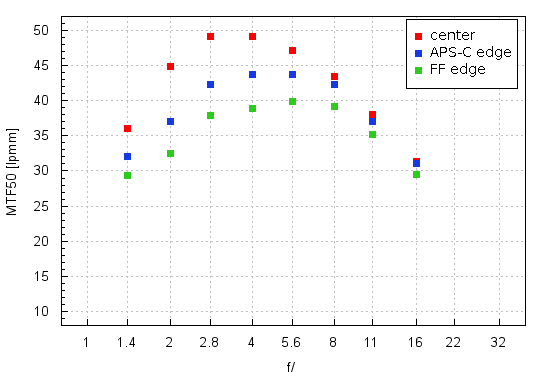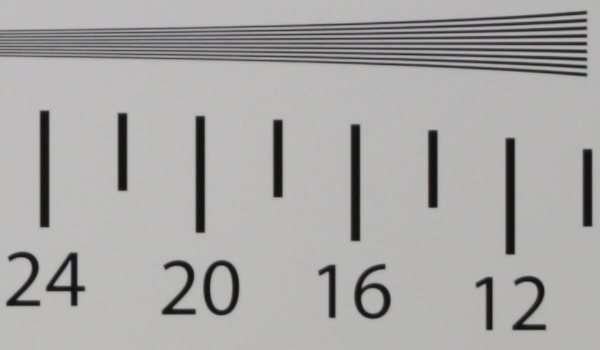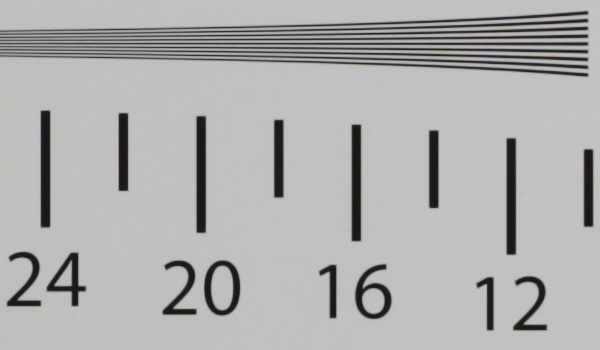Carl Zeiss Otus 28 mm f/1.4
4. Image resolution
Let’s check how the tested lens compares here – its results in the frame centre, on the edge of the APS-C/DX and on the edge of full frame presents the graph below.

Please Support UsIf you enjoy our reviews and articles, and you want us to continue our work please, support our website by donating through PayPal. The funds are going to be used for paying our editorial team, renting servers, and equipping our testing studio; only that way we will be able to continue providing you interesting content for free. |
- - - - - - - - - - - - - - - - - - - - - - - - - - - - - - - - - - - - - - - - - - - - - - - -
The graph shows clearly that the Otus devices are a class of their own and the main cause of changing our resolution chapter opening formula. Once again the resolution record is broken, improving noticeably the previous values achieved by the Otus 1.4/85 and the Canon 1.4/53L II. From now on it amounts to 49.2 lpmm on the sensor of the Canon EOS 5D Mark III, with the measurement error of 0.5 lpmm.
The performance on the edge of the APS-C/DX sensor is brilliant as well. You get fully useful images already with the lens wide open; their quality improves quickly on stopping down the aperture and reaches a very high level of almost 44 lpmm. It’s worth reminding here that some primes had problems with achieving such results in the frame centre – for example the maximum result of the Canon EF 28 mm f/2.8 IS USM in the frame centre was 42.9 lpmm, an the Canon EF 28 mm f/1.8 USM could get to 44.3 lpmm at the maximum.
If you want to find a weak point of the Otus 1.4/28 you should check the image quality at the maximum relative aperture and on the very edge of full frame. The MTFs in that place are a tad below the decency level but it’s enough you close the aperture to f/1.6-1.8 and photos become completely acceptable. On more significant stopping down the resolution is able to reach a very high level of almost 40 lpmm. Compare that to the results of the Nikkor AF-S 28 mm f/1.8G, a lens launched in 2012. On a bit more pixel-packed sensor of the Nikon D3X that lens wasn’t able to exceed 34 lpmm on the edges of full frame.
There have been a lot of launches lately in the segment of full frame fixed focal length lenses which focal lengths ranged from 24 to 35 mm but still we don’t doubt that the Otus 1.4/28 is the sharpest of them all, no matter whether you consult the frame centre or the edge of the frame.
At the end of this chapter traditionally we present crops of our resolution testing chart, taken from JPEG files which were saved along RAW files used for the analysis above.
| Canon 5D Mk III, JPEG, f/1.4 |
 |
| Canon 5D Mk III, JPEG, f/4.0 |
 |






